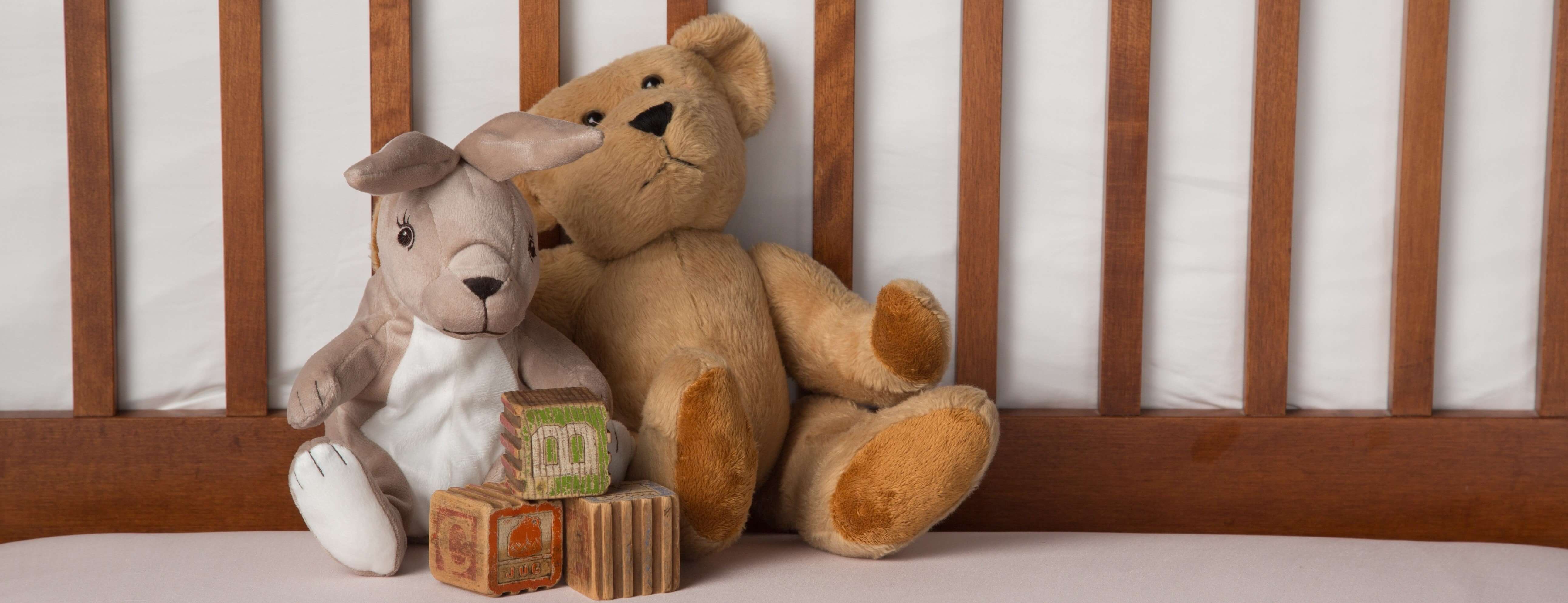While the topic is controversial, the benefits of creating a sleep routine and developing healthy sleep habits outweigh the initial struggle you may face when you start sleep training a toddler. Once you and your little one are sleeping through the night in separate beds, sleep quality will improve for both of you, your energy levels will rise and you’ll be ready to tackle the next day. There are a few different methods you can use when sleep training a toddler - each has its own benefits.
Gradual Withdrawal
You can try the gradual withdrawal method, where you slowly encourage the child to fall asleep themselves. Perform your bedtime routine as you normally would, but encourage your child to fall asleep with you nearby, sitting in a chair or on the floor. As you continue to follow this method, move your spot closer and closer to the door. Eventually, you will be able to say goodnight to your child and leave their bedroom.
Graduated Extinction
The graduated extinction method involves leaving the child’s room immediately after putting them to bed and returning at a set interval to check on them, but lengthening the interval until they are asleep. As time passes you will be able to leave their room and not return as they sleep through the night.
Cry-It-Out (CIO) Method
In the cry-it-out method, parents leave their child alone to cry in order to learn how to sleep on their own and understand a schedule. This is also the most controversial method of sleep training. As Treehugger columnist Katherine Martinko points out, vilifying a method of sleep training takes away from the real issue at hand: children are not getting enough restful sleep. Many experts now advocate for a method referred to as "controlled crying" or Ferberizing. This involves parents prolonging the time they leave their child in a crib or bed and then patting and comforting the child without picking them up or feeding them.
Excuse Me Method
Another gentle manner of sleep training is to use the excuse me method, where you create an excuse or reason you need to leave your child but state that you’ll be back. The more boring the excuse, the better, as your child won’t be drawn to follow you if you’re just washing a dish or emptying the trash can. The key to succeeding with any of these methods is consistency and reinforcement. Create a bedtime routine and stick to it night after night. That may seem boring as an adult, but children thrive on schedules and routines. Consistently follow your method for sleep training a toddler. Take your child back to their bed every time they enter your bedroom during the night. Reinforce that it’s bedtime and they need to go to sleep, and that you will see them in the morning. In order for everyone to get their most restful and restorative sleep, you should avoid co-sleeping or bed-sharing. In a recent Huffington Post article, Dr. Kate Roberts pointed out that children who co-sleep are less self-reliant in later years and may be socially challenged when it comes to sleepovers and overnight class trips. She also points out that there is a mental and physical toll on parents who have been living without restful nights of sleep. It’s also very important that your child feel safe and relaxed before bed. If they are anxious or worried, it will be very difficult for them to calm down and fall asleep naturally. Sleep training a toddler can be challenging, but the reward of better sleep for both you and your child is worth it. Information for this post was taken from Sleepytot, Dr. Craig Canapari, The Globe and Mail and Huffington Post.






